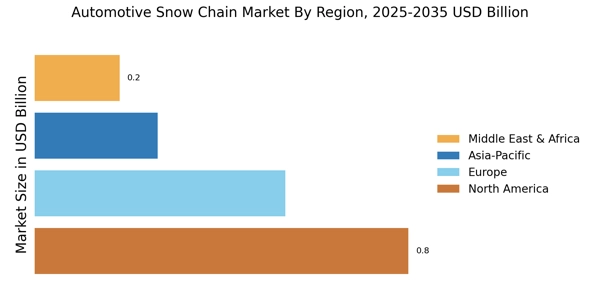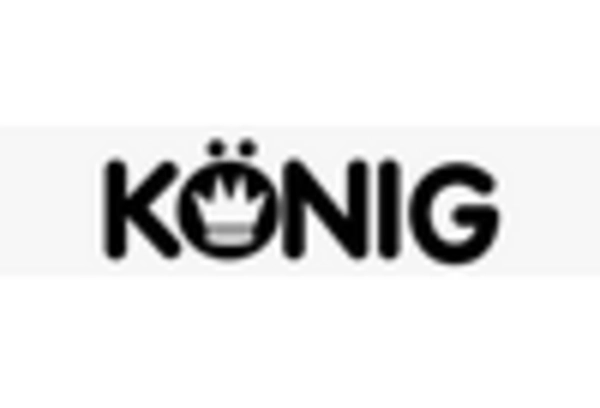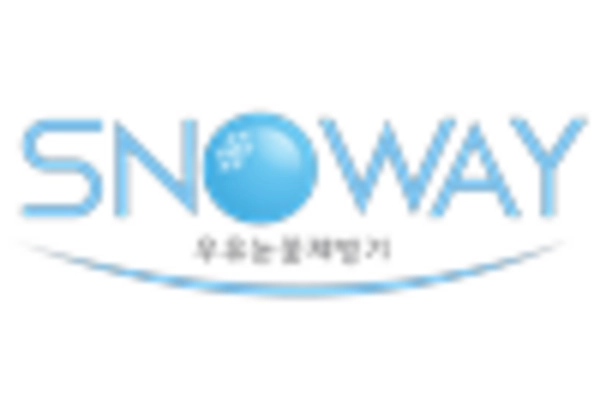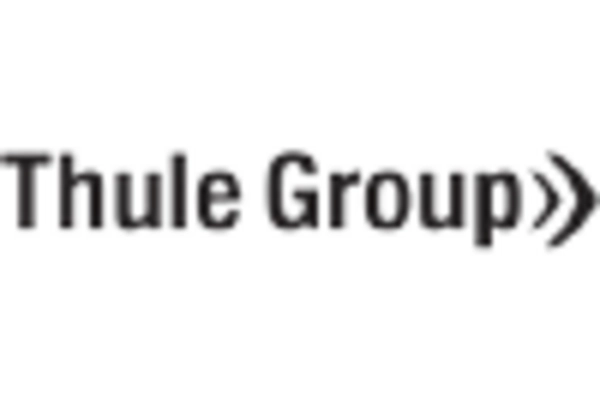Rising Demand for Winter Travel Safety
The Automotive Snow Chain Market experiences a notable increase in demand as consumers prioritize safety during winter travel. Harsh weather conditions, including heavy snowfall and icy roads, necessitate the use of snow chains to enhance vehicle traction. This trend is particularly evident in regions prone to severe winter weather, where the adoption of snow chains is becoming a standard practice among drivers. According to recent data, the market for automotive snow chains is projected to grow at a compound annual growth rate of approximately 5% over the next few years. This growth is driven by heightened awareness of road safety and the potential risks associated with winter driving, leading consumers to invest in reliable snow chain solutions.
Government Regulations and Safety Standards
The Automotive Snow Chain Market is also shaped by government regulations and safety standards aimed at enhancing road safety during winter months. Many jurisdictions have implemented laws requiring the use of snow chains in certain conditions, particularly in mountainous or heavily snow-affected areas. These regulations not only promote the use of snow chains but also encourage manufacturers to innovate and improve their products to meet safety standards. As a result, the market is likely to see an influx of advanced snow chain designs that comply with these regulations, further driving consumer adoption. The interplay between regulatory frameworks and market dynamics suggests a robust future for the automotive snow chain sector.
Expansion of Automotive Sales in Cold Regions
The Automotive Snow Chain Market is significantly influenced by the expansion of automotive sales in regions characterized by cold climates. As more vehicles are sold in these areas, the demand for snow chains naturally increases. Data indicates that vehicle sales in northern regions have surged, with a corresponding rise in the need for winter accessories such as snow chains. This trend suggests that manufacturers and retailers are likely to focus on developing and marketing snow chains tailored to meet the specific needs of consumers in these markets. The growing automotive sector in colder regions is expected to bolster the snow chain market, as consumers seek to equip their vehicles for winter conditions.
Technological Innovations in Snow Chain Design
The Automotive Snow Chain Market is witnessing a wave of technological innovations that enhance the performance and usability of snow chains. Manufacturers are increasingly investing in research and development to create lightweight, durable, and easy-to-install snow chains. Innovations such as self-tensioning systems and materials that provide better grip on icy surfaces are becoming more prevalent. These advancements not only improve the effectiveness of snow chains but also appeal to a broader consumer base, including those who may have previously been hesitant to use them. As technology continues to evolve, the market is expected to expand, driven by the introduction of superior products that meet the demands of modern drivers.
Increased Online Retail and Distribution Channels
The Automotive Snow Chain Market is benefiting from the rise of online retail and diverse distribution channels. E-commerce platforms have made it easier for consumers to access a wide range of snow chain products, often at competitive prices. This shift towards online shopping is particularly advantageous for consumers in remote areas where traditional retail options may be limited. Data suggests that online sales of automotive accessories, including snow chains, have seen a significant uptick, indicating a shift in consumer purchasing behavior. As more consumers turn to online platforms for their winter driving needs, the automotive snow chain market is likely to experience accelerated growth, driven by increased accessibility and convenience.


















Leave a Comment